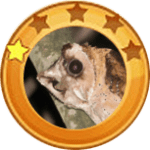- Home
- Shop
- Forest Series
- Grassland Series
- Desert Series
- Contact
- Home
- Shop
- Forest Series
- Grassland Series
- Desert Series
- Contact

Bay-Owl Series





Two Control Modes
1. Parental Remote-Control Mode: You can enjoy fun with your children together. 2. Battery Operate Mode: Your children can easily start the ride car with the push of a button and control it to move forward or backward.
Kid-Friendly Designs
a. Soft start design prevents your kids from being scared by sudden acceleration. b. The retractable handle and wheels make the toy car easy to move when it is not running. c. It comes with and spacious seat with safety belt.
Best Gift for Children
Our kid ride on car with cool licensed Mercedes-Benz appearance, is an exquisite gift for children aged 3 to 8 years old. It measures 39.4” (L) X 22.8” (W) X 18.1” (H) and weighs 22.4 lbs. Maximum weight capacity: 66 lbs. Charging time: 8 to 12 hours.


CHARACTERISTICS
The Chipmunk is a member of the family Mammalia, Rodentia and Sciuridae. It is also known as the Striped Squirrel, the Timber Tiger and the Mini-bear. The body length among most Chipmunks ranges from 5.5 to 6.3 inches and the tail length is 5 Inches. Chipmunks typically weigh about 0.02 pounds and live about 5 to 10 years. They have small but prominent ears which face forwards, and small eyes on the sides of their heads. Most wild Chipmunks are lively.


Lorem ipsum dolor sit amet, consectetur adipiscing elit. Ut elit tellus, luctus nec ullamcorper mattis, pulvinar dapibus leo.


CHARACTERISTICS
The Sri Lanka Bay-Owl is a medium-sized nocturnal bird measuring about 9.8 to 11.8 inches in length and weighing around 0.5 pounds. It looks bulky and has short legs, a tail, and wings. The facial disc is heart-shaped. The upper parts are dark brown and spotted. The lower parts are buff with scattered black spotting. Its call is a quavering multi-element whistling sound.

RANGE AND HABITAT
The Sri Lanka Bay-Owls are distributed in South India and Sri Lanka. They inhabit humid evergreen and semi-evergreen forests, wooded hillsides, deciduous forests, mangrove forests, and degraded forests. They occur from lowlands to 1000-meter elevations.

DIET
The Sri Lanka Bay-Owl feeds on small rodents, mice, rats, bats, birds, lizards, frogs, beetles, and other large insects such as grasshoppers.

BEHAVIOR
Habits and Lifestyle
The Sri Lanka Bay-Owls roost in the cavities of tree trunks in the daytime and commence their activities in the dark of the night. They prefer to remain detached from flocks, but sometimes they form pairs and stick with family members. Hooting is normally witnessed while establishing territories, warding off intruders, or even alluring mates. This species does not know how to migrate. In times of food shortages during winter, they do fly to the southern parts, but the process is termed irruption, not migration.
Mating Habits
The Sri Lanka Bay-Owls are monogamous. The ideal breeding season is springtime. Males engage in courtship, and actions like aerial movements, calls, and offers of food are common gestures for alluring female owls. Copulation takes place once the females accept food. After successful breeding and nest construction, the females incubate the eggs for about 30 days after which the males take to feeding the owlets.

The Chipmunk is a member of the family Mammalia, Rodentia and Sciuridae. It is also known as the Striped Squirrel, the Timber Tiger and the Mini-bear. The body length among most Chipmunks ranges from 5.5 to 6.3 inches and the tail length is 5 inches. Chipmunks typically weigh about 0.02 pounds and live about 5 to 10 years. They have small but prominent ears which face forwards, small eyes on the sides of their heads. Most wild Chipmunks are lively.
The Red Squirrel, a member of the Sciuridae, is an arboreal, omnivorous rodent often referred to as a Forest Seeder and folklore as the Devil King Squirrel.
The Arizona Gray Squirrel, also known as the American Gray Squirrel, is a member of the family Rodentia and Sciuridae. It is small in size, with gray fur and a belly between white and cream. It has long ears, no tufts of fur and a fluffy tail edged in white. The body is about 16-20 inches long and weighs up to 1.4 pounds.
The Rock Squirrel, also known as Sao Maozi or Stone Mouse, belongs to the rodent and is a species in the family Sciuridae. The most common natural predators of the Rock Squirrel include bobcats, owls, eagles and snakes. Though the Rock Squirrel is cute, alert, and courageous, it is still considered a pest due to its habit of destroying crops.
The Abert’s Squirrel is a member of the genus Sciurus with a body length of 18-22.8 inches, a tail length of 7.5-9.8 inches and a weight of 2.2 pounds, and can live up to 10 years in the wild. Its most distinctive feature is tassels of fur about 0.8-1.2 inches long at the tip of its ears, which looks very interesting. In addition, it is alert and agile.

The Sri Lanka Bay Owl – an Elusive Species Found Deep in the Rainforests of Sri Lanka
The Sri Lanka Bay Owl (Phodilus assimilis) is a species of bay owl in the family Tytonidae. It is endemic to the island of Sri Lanka and the Western Ghats in Kerala, South-Western India. It was considered a subspecies of the Oriental Bay Owl (Phodilus badius) but is now treated as a full species due to its distinctive call, plumage and disjunction distribution.
Its natural habitats are subtropical or tropical moist montane forests and subtropical or tropical high-altitude grassland. It is threatened by habitat loss.
The Sri Lanka Bay Owl was described by the English politician and naturalist Allan Octavian Hume in 1873 but it was only in 1877 that he introduced the binomial name Phodilus assimilis. The genus name Phodilus is from the Ancient Greek phōs for “light” or “daylight” and deilos for “timid” or “cowardly”. The specific epithet assimilis is the Latin for “similar” or “like”.
It was earlier considered a subspecies of the Oriental Bay Owl Phodilus Badius but is now treated as a separate species based on differences in call and plumage.
Their call is almost “un-owl like” given its almost whistling pitch and melodious tune. When visiting the deep tropical rainforests of Sinharaja and Kitulgala one might hear this distinctive call at night. But seeing one in its day roost is a completely different story.
Many seasoned birders have rarely seen this extremely shy and elusive bird, who is found very rarely even in these parts.
The Sri Lanka Bay Owl is by far the rarest and most difficult species of owl in Sri Lanka to see.



Follow Us: